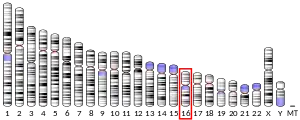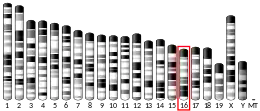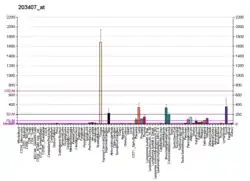Periplakin
Periplakin is a protein that in humans is encoded by the PPL gene.[5][6][7]
| PPL | |||||||||||||||||||||||||||||||||||||||||||||||||||
|---|---|---|---|---|---|---|---|---|---|---|---|---|---|---|---|---|---|---|---|---|---|---|---|---|---|---|---|---|---|---|---|---|---|---|---|---|---|---|---|---|---|---|---|---|---|---|---|---|---|---|---|
| |||||||||||||||||||||||||||||||||||||||||||||||||||
| Identifiers | |||||||||||||||||||||||||||||||||||||||||||||||||||
| Aliases | PPL, periplakin | ||||||||||||||||||||||||||||||||||||||||||||||||||
| External IDs | OMIM: 602871 MGI: 1194898 HomoloGene: 2026 GeneCards: PPL | ||||||||||||||||||||||||||||||||||||||||||||||||||
| |||||||||||||||||||||||||||||||||||||||||||||||||||
| |||||||||||||||||||||||||||||||||||||||||||||||||||
| |||||||||||||||||||||||||||||||||||||||||||||||||||
| |||||||||||||||||||||||||||||||||||||||||||||||||||
| |||||||||||||||||||||||||||||||||||||||||||||||||||
| Wikidata | |||||||||||||||||||||||||||||||||||||||||||||||||||
| |||||||||||||||||||||||||||||||||||||||||||||||||||
The protein encoded by this gene is a component of desmosomes and of the epidermal cornified envelope in keratinocytes. The N-terminal domain of this protein interacts with the plasma membrane and its C-terminus interacts with intermediate filaments. Through its rod domain, this protein forms complexes with envoplakin. This protein may serve as a link between the cornified envelope and desmosomes as well as intermediate filaments. AKT1/PKB, a protein kinase mediating a variety of cell growth and survival signaling processes, is reported to interact with this protein, suggesting a possible role for this protein as a localization signal in AKT1-mediated signaling.[7]
See also
References
- GRCh38: Ensembl release 89: ENSG00000118898 - Ensembl, May 2017
- GRCm38: Ensembl release 89: ENSMUSG00000039457 - Ensembl, May 2017
- "Human PubMed Reference:". National Center for Biotechnology Information, U.S. National Library of Medicine.
- "Mouse PubMed Reference:". National Center for Biotechnology Information, U.S. National Library of Medicine.
- Ruhrberg C, Williamson JA, Maatta A, Watt FM (Jun 1998). "The periplakin gene maps to 16p13.3 in human and 16A-B1 in mouse". Genomics. 49 (1): 157–9. doi:10.1006/geno.1997.5206. PMID 9570964.
- Aho S, McLean WH, Li K, Uitto J (Jun 1998). "cDNA cloning, mRNA expression, and chromosomal mapping of human and mouse periplakin genes". Genomics. 48 (2): 242–7. doi:10.1006/geno.1997.5188. PMID 9521878.
- "Entrez Gene: PPL periplakin".
- Kazerounian, Shideh; Uitto Jouni; Aho Sirpa (Oct 2002). "Unique role for the periplakin tail in intermediate filament association: specific binding to keratin 8 and vimentin". Exp. Dermatol. Denmark. 11 (5): 428–38. doi:10.1034/j.1600-0625.2002.110506.x. ISSN 0906-6705. PMID 12366696. S2CID 25735126.
- Karashima, Tadashi; Watt Fiona M (Dec 2002). "Interaction of periplakin and envoplakin with intermediate filaments". J. Cell Sci. England. 115 (Pt 24): 5027–37. doi:10.1242/jcs.00191. ISSN 0021-9533. PMID 12432088.
- Ruhrberg, C; Hajibagheri M A; Parry D A; Watt F M (Dec 1997). "Periplakin, a novel component of cornified envelopes and desmosomes that belongs to the plakin family and forms complexes with envoplakin". J. Cell Biol. UNITED STATES. 139 (7): 1835–49. doi:10.1083/jcb.139.7.1835. ISSN 0021-9525. PMC 2132639. PMID 9412476.
Further reading
- Amagai M (1999). "Autoimmunity against desmosomal cadherins in pemphigus". J. Dermatol. Sci. 20 (2): 92–102. doi:10.1016/S0923-1811(99)00016-X. PMID 10379702.
- Leung CL, Green KJ, Liem RK (2002). "Plakins: a family of versatile cytolinker proteins". Trends Cell Biol. 12 (1): 37–45. doi:10.1016/S0962-8924(01)02180-8. PMID 11854008.
- Bonaldo MF, Lennon G, Soares MB (1997). "Normalization and subtraction: two approaches to facilitate gene discovery". Genome Res. 6 (9): 791–806. doi:10.1101/gr.6.9.791. PMID 8889548.
- Ruhrberg C, Hajibagheri MA, Parry DA, Watt FM (1998). "Periplakin, a novel component of cornified envelopes and desmosomes that belongs to the plakin family and forms complexes with envoplakin". J. Cell Biol. 139 (7): 1835–49. doi:10.1083/jcb.139.7.1835. PMC 2132639. PMID 9412476.
- Nagase T, Ishikawa K, Miyajima N, et al. (1998). "Prediction of the coding sequences of unidentified human genes. IX. The complete sequences of 100 new cDNA clones from brain which can code for large proteins in vitro". DNA Res. 5 (1): 31–9. doi:10.1093/dnares/5.1.31. PMID 9628581.
- Aho S, Rothenberger K, Tan EM, et al. (1999). "Human periplakin: genomic organization in a clonally unstable region of chromosome 16p with an abundance of repetitive sequence elements". Genomics. 56 (2): 160–8. doi:10.1006/geno.1998.5704. PMID 10051401.
- DiColandrea T, Karashima T, Määttä A, Watt FM (2000). "Subcellular distribution of envoplakin and periplakin: insights into their role as precursors of the epidermal cornified envelope". J. Cell Biol. 151 (3): 573–86. doi:10.1083/jcb.151.3.573. PMC 2185584. PMID 11062259.
- van den Heuvel AP, de Vries-Smits AM, van Weeren PC, et al. (2003). "Binding of protein kinase B to the plakin family member periplakin". J. Cell Sci. 115 (Pt 20): 3957–66. doi:10.1242/jcs.00069. PMID 12244133.
- Kazerounian S, Uitto J, Aho S (2003). "Unique role for the periplakin tail in intermediate filament association: specific binding to keratin 8 and vimentin". Exp. Dermatol. 11 (5): 428–38. doi:10.1034/j.1600-0625.2002.110506.x. PMID 12366696. S2CID 25735126.
- Karashima T, Watt FM (2003). "Interaction of periplakin and envoplakin with intermediate filaments". J. Cell Sci. 115 (Pt 24): 5027–37. doi:10.1242/jcs.00191. PMID 12432088.
- Strausberg RL, Feingold EA, Grouse LH, et al. (2003). "Generation and initial analysis of more than 15,000 full-length human and mouse cDNA sequences". Proc. Natl. Acad. Sci. U.S.A. 99 (26): 16899–903. Bibcode:2002PNAS...9916899M. doi:10.1073/pnas.242603899. PMC 139241. PMID 12477932.
- Feng GJ, Kellett E, Scorer CA, et al. (2003). "Selective interactions between helix VIII of the human mu-opioid receptors and the C terminus of periplakin disrupt G protein activation". J. Biol. Chem. 278 (35): 33400–7. doi:10.1074/jbc.M305866200. PMID 12810704.
- Kazerounian S, Aho S (2003). "Characterization of periphilin, a widespread, highly insoluble nuclear protein and potential constituent of the keratinocyte cornified envelope". J. Biol. Chem. 278 (38): 36707–17. doi:10.1074/jbc.M303896200. PMID 12853457.
- Straub BK, Boda J, Kuhn C, et al. (2004). "A novel cell-cell junction system: the cortex adhaerens mosaic of lens fiber cells". J. Cell Sci. 116 (Pt 24): 4985–95. doi:10.1242/jcs.00815. PMID 14625392.
- Kalinin AE, Idler WW, Marekov LN, et al. (2004). "Co-assembly of envoplakin and periplakin into oligomers and Ca(2+)-dependent vesicle binding: implications for cornified cell envelope formation in stratified squamous epithelia". J. Biol. Chem. 279 (21): 22773–80. doi:10.1074/jbc.M313660200. PMID 15033990.
- Beekman JM, Bakema JE, van de Winkel JG, Leusen JH (2004). "Direct interaction between FcgammaRI (CD64) and periplakin controls receptor endocytosis and ligand binding capacity". Proc. Natl. Acad. Sci. U.S.A. 101 (28): 10392–7. Bibcode:2004PNAS..10110392B. doi:10.1073/pnas.0401217101. PMC 478582. PMID 15229321.
External links
This article is issued from Wikipedia. The text is licensed under Creative Commons - Attribution - Sharealike. Additional terms may apply for the media files.




